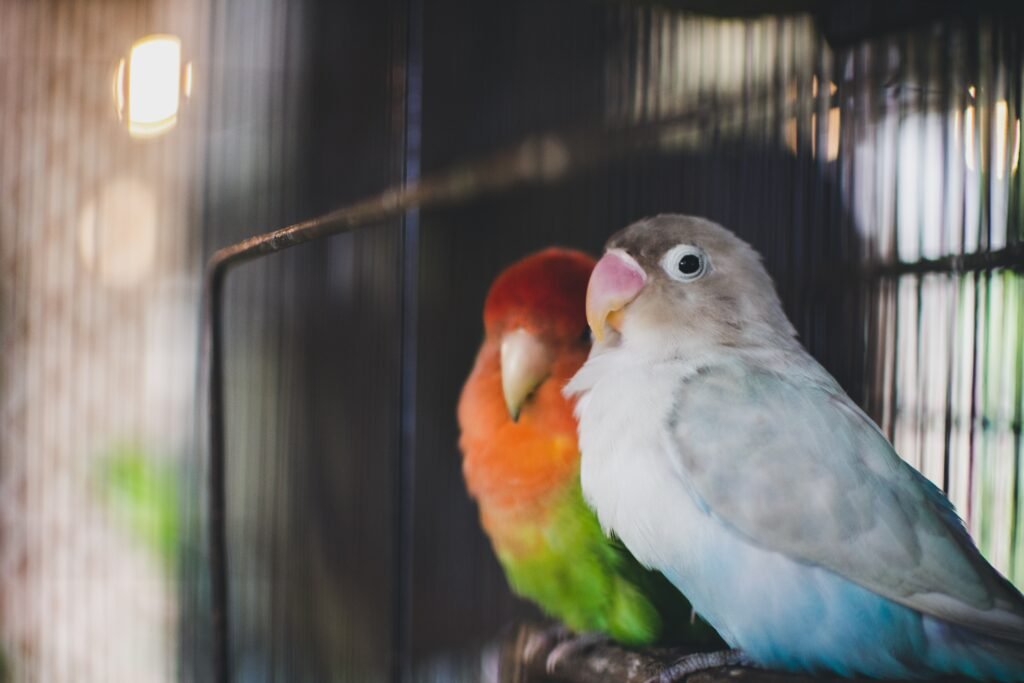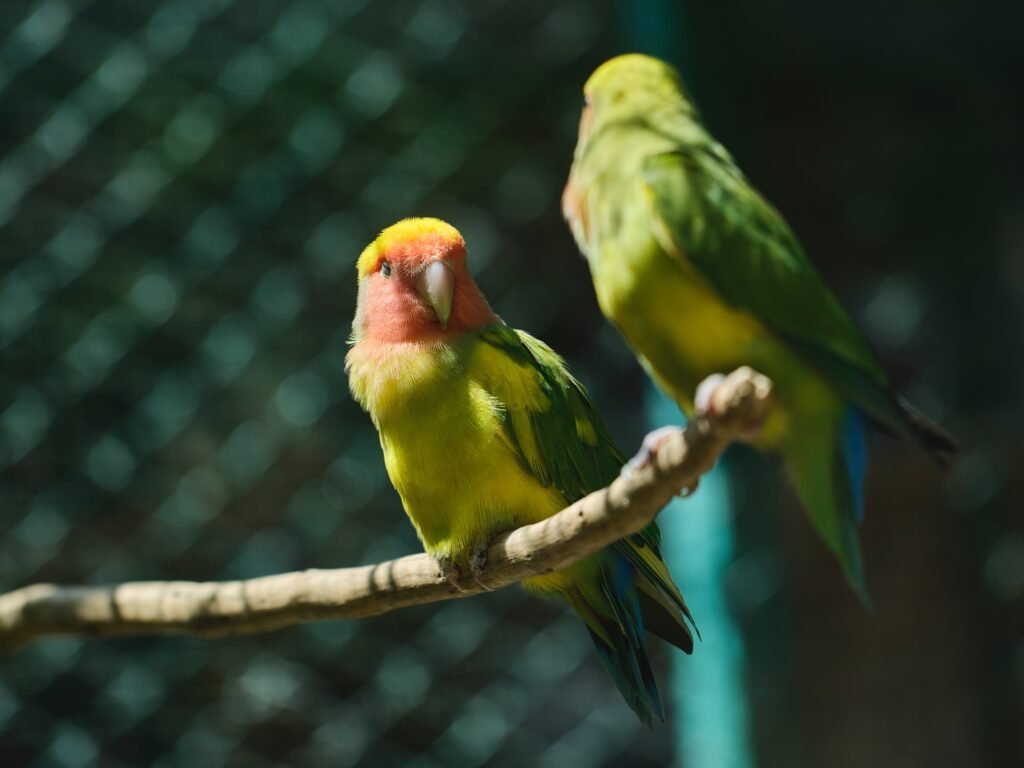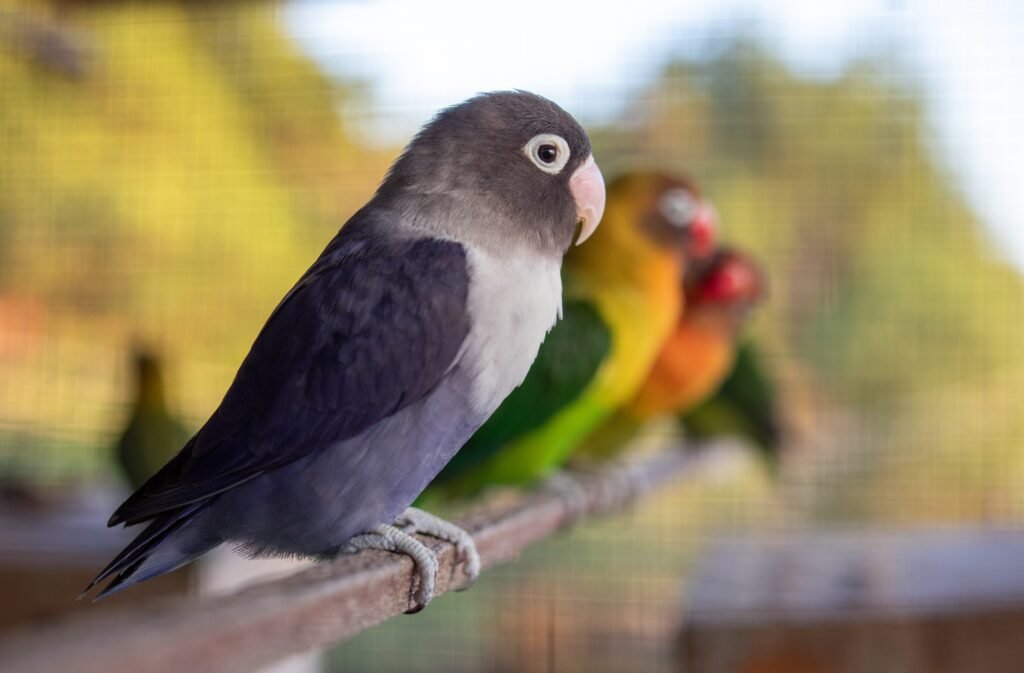 Lovebirds are enchanting and colorful birds known for their strong bond and affectionate behavior. If you are a bird enthusiast or simply looking to attract these delightful creatures to your garden, this article will provide you with proven strategies to create an inviting environment for lovebirds. By following these tips, you can increase your chances of attracting these beautiful birds and enjoy their presence in your surroundings.
Lovebirds are enchanting and colorful birds known for their strong bond and affectionate behavior. If you are a bird enthusiast or simply looking to attract these delightful creatures to your garden, this article will provide you with proven strategies to create an inviting environment for lovebirds. By following these tips, you can increase your chances of attracting these beautiful birds and enjoy their presence in your surroundings.
Understanding Lovebirds
Before diving into the strategies, let’s gain a deeper understanding of lovebirds. Lovebirds belong to the genus Agapornis and are native to Africa. They are small, social birds that form strong pair bonds and are often seen sitting close to each other, preening, or feeding one another. These adorable birds come in a variety of vivid colors, making them a delightful sight for any bird lover.
Lovebirds are known for their playful and affectionate behavior, which makes them popular pets among bird enthusiasts. It’s important to understand their unique characteristics and needs in order to create a suitable habitat for them.
Creating a Lovebird-Friendly Habitat
To attract lovebirds, it is crucial to create a habitat that meets their specific needs. Here are some essential elements to consider when designing a lovebird-friendly environment:
1. Providing Proper Housing
Lovebirds require a spacious and secure enclosure that allows them to fly and exercise. A large aviary or a cage with ample room for them to move around comfortably is recommended. The bars of the cage should be appropriately spaced to prevent them from getting stuck or escaping. Providing perches at various heights will allow them to exercise their wings and keep them entertained. Including toys for mental stimulation, such as bells or puzzles, will also help keep them happy and engaged.
2. Offering Nesting Opportunities
Lovebirds are avid nest builders, so offering suitable nesting opportunities is vital. Provide nesting boxes made of natural materials, such as wood or wicker, with a small entrance hole. Place the nesting boxes at different heights within their enclosure, allowing them to choose their preferred location. Adding nesting materials like shredded paper, hay, or coconut fibers will further entice them to build their nests.
Lovebirds are known to be very selective when it comes to choosing their nesting sites. Providing a variety of options will give them the freedom to choose the one that suits them best.
3. Creating a Suitable Diet
A well-balanced and nutritious diet is essential for the health and well-being of lovebirds. Offer them a variety of fresh fruits, vegetables, seeds, and commercially available lovebird pellets. It’s important to provide a diverse range of foods to ensure they get all the necessary nutrients. Include foods rich in calcium, such as leafy greens and cuttlebones, to support their bone health and egg production. Fresh water should always be available, and regularly changing it is crucial to maintain cleanliness.
Lovebirds have specific dietary requirements, and it’s important to provide them with a balanced diet to ensure their overall health and longevity.
4. Providing Privacy and Shelter
Lovebirds prefer a sense of privacy and appreciate areas where they can retreat and feel safe. Planting dense shrubs, bushes, and trees around their enclosure will offer them shade, protection from predators, and a sense of security. These natural barriers will also provide them with opportunities for exploration and foraging. Additionally, providing small hideouts within their enclosure, such as birdhouses or wooden structures, can serve as cozy retreats for them. These hiding spots will give them a sense of security and enable them to relax and feel at ease in their habitat.
Creating a safe and secure environment is essential for lovebirds to thrive and feel comfortable in their surroundings. By providing them with privacy and shelter, you are ensuring their well-being and happiness.
Attracting Lovebirds to Your Garden
If you want to attract lovebirds to your outdoor space, there are several strategies you can implement to make it more appealing to them. Creating an environment that mimics their natural habitat will significantly increase your chances of attracting these charming birds. Here’s how you can do it:
1. Selecting the Right Plants
Lovebirds are naturally drawn to areas with abundant vegetation. Planting a variety of flowering plants, such as hibiscus, lavender, and sunflowers, will not only beautify your garden but also attract lovebirds with their vibrant colors and nectar-rich blooms. Lovebirds are known to feed on nectar and fruits, so including fruit-bearing plants like berries or citrus trees will provide them with a source of food.
It’s important to choose plants that are safe for lovebirds, as some plants can be toxic to them. Research the plants you plan to include in your garden to ensure they are bird-friendly and pose no harm to the lovebirds.
2. Offering Fresh Water Sources
Lovebirds, like all birds, require access to clean and fresh water for drinking and bathing. Installing a birdbath or a shallow dish filled with water in your garden will attract lovebirds and other bird species. It’s important to place the water source in an open area where the birds can easily access it. Ensure that the water source is shallow to avoid any accidents, and regularly clean and refill it to maintain hygiene.
Water is not only essential for their hydration but also for their grooming. Lovebirds enjoy bathing and will appreciate having a dedicated space in your garden to do so.
3. Providing Nesting Options
To entice lovebirds to nest in your garden, consider putting up nest boxes specifically designed for them. These boxes should have a small entrance hole and be placed in areas with a good amount of foliage and cover. Lovebirds prefer nesting in secluded and well-protected areas, so positioning the nest boxes strategically will increase the likelihood of them choosing your garden as their nesting site. By providing suitable nesting options, you create attractive opportunities for lovebirds to establish their homes and raise their young in your garden.
4. Maintaining a Safe Environment
Lovebirds, being small birds, are vulnerable to various threats, such as predators and harsh weather conditions. Minimize potential risks by keeping your garden free of toxic plants, harmful chemicals, and offering adequate shelter. Regularly inspect and repair any damaged structures, ensuring the safety and security of the lovebirds that visit your garden.
It’s important to regularly monitor your garden and address any potential hazards to ensure the well-being of the lovebirds and other bird species that may frequent your garden.
Conclusion
Attracting lovebirds requires understanding their needs and creating an environment that caters to those requirements. By providing suitable housing, nesting opportunities, a proper diet, privacy, and shelter, you can ensure that lovebirds will feel comfortable and secure in your care. Additionally, attracting lovebirds to your garden involves selecting the right plants, offering fresh water sources, providing nesting options, and maintaining a safe environment. By implementing these strategies, you can create an inviting haven for lovebirds and enjoy the beauty and charm they bring to your surroundings.
FAQ
Q1: What type of housing do lovebirds require?
A1: Lovebirds require a spacious and secure enclosure, such as a large aviary or a cage with ample room for them to fly and exercise. The bars of the cage should be appropriately spaced to prevent them from getting stuck or escaping. Providing perches at various heights and toys for mental stimulation is also important.
Q2: How can I provide suitable nesting opportunities for lovebirds?
A2: Lovebirds are avid nest builders, so offering nesting boxes made of natural materials like wood or wicker with a small entrance hole is vital. Place the nesting boxes at different heights within their enclosure and provide nesting materials like shredded paper, hay, or coconut fibers.
Q3: What should I include in the diet of lovebirds?
A3: Lovebirds require a well-balanced and nutritious diet. Offer them a variety of fresh fruits, vegetables, seeds, and commercially available lovebird pellets. Include foods rich in calcium, like leafy greens and cuttlebones, and ensure fresh water is always available.
Q4: How can I attract lovebirds to my garden?
A4: To attract lovebirds to your garden, you can select the right plants like hibiscus, lavender, and sunflowers that lovebirds are naturally drawn to. Offer fresh water sources like a birdbath or shallow dish, provide nesting options like nest boxes, and maintain a safe environment by keeping your garden free of toxic plants and offering adequate shelter.


